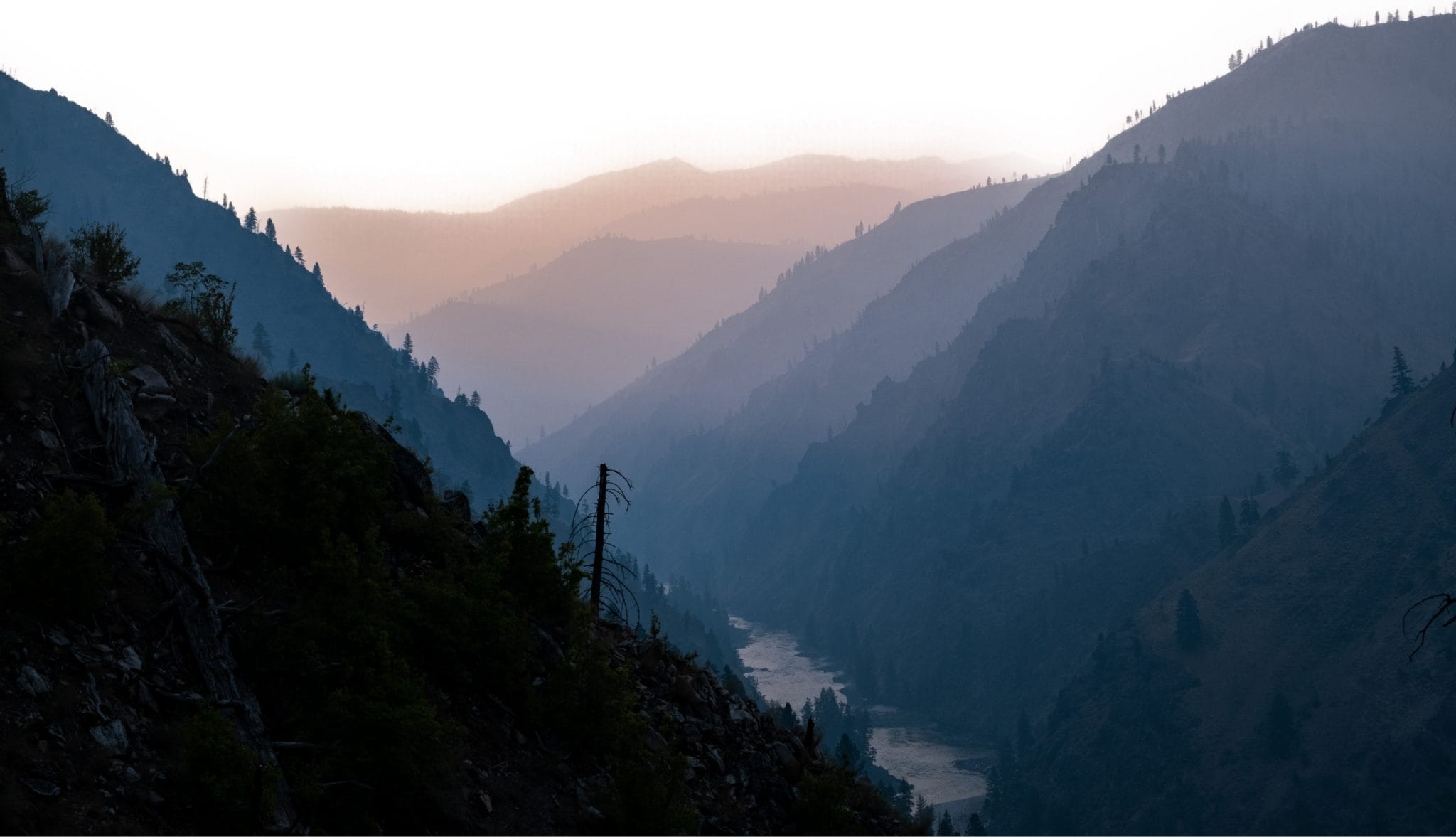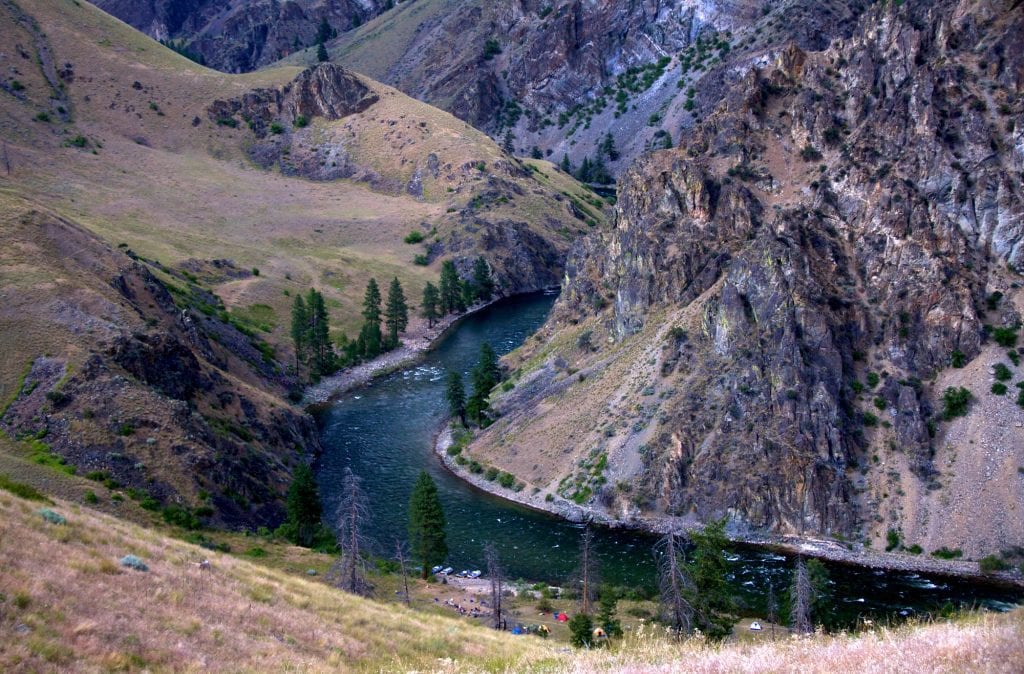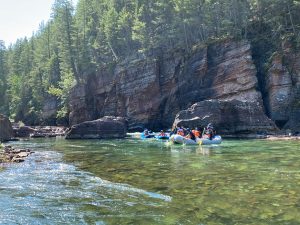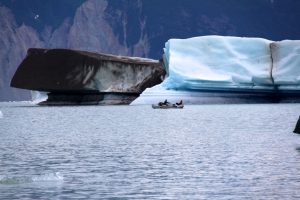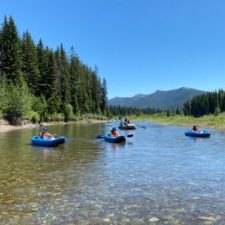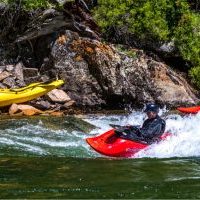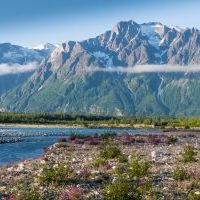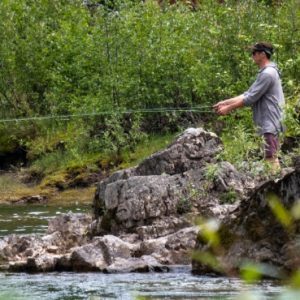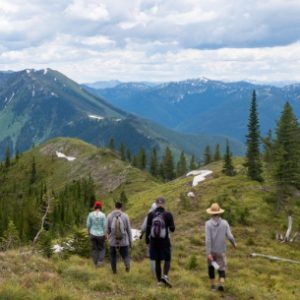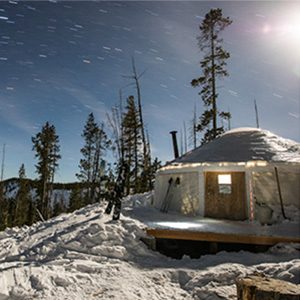Overview
In the heart of central Idaho’s 2.3 million acre Frank Church River of No Return Wilderness flows the legendary Middle Fork of the Salmon River, one of the most pristine and prolific trout fisheries on the planet. This dynamic landscape begins in high, dense forests of Fir and Spruce, passes by majestic Ponderosa Pines on grassy benches, and finally enters the impressive granite gorge of the Impassable Canyon. See this amazing river canyon while experiencing the world-class dry fly fishing of Idaho. We offer a shorter three-day trip that allows you to have an incredible Middle Fork Salmon experience over a long weekend, and also have options for our typical 6 day prime fishing trips later in the season.
- 3-6 days; 33-75 miles
- World-class cutthroat trout fishing
- Fishing-specific raft setup
- Amazing side creeks and canyons
- Professional fishing guides
- Optional hiking to stunning vistas
- Learn about pioneers and visit homesteads
- Rich Native American history and pictographs
When the angle of the sun lengthens and summer begins to wane, the current of the Middle Fork drops and slows. Grass turns gold. The warm, distinct glow of impending Autumn washes over every rock face, each stately lodgepole pine, the sand of the beaches. River water becomes so clear you can see the shadowy silhouette of native cutthroat lurking in the eddies, observing every cautious movement of the trout’s body as it considers your fly perched on the surface of the water.
There just isn’t another fishing experience that compares.
The Middle Fork of the Salmon flows through the interior of the Frank Church River of No Return Wilderness, one of the most pristine and prolific Westslope Cutthroat trout fisheries on the planet. WRO guides are well-versed in navigating our fishing-specific crafts towards the places trout lie in wait—the glassy water pooling behind mid-river rocks, beneath granite walls, along the seam lines of slow, circling back eddies. Guides are ready to assist when it comes to mastering your cast or settling on a fly to use, sharing knowledge that derives only from time spent on the same river, season after season.
Not only are the trout abundant on the Middle Fork, they are hungry and eager, making for a trip that will thrill amateurs and skilled anglers alike!
The Middle Fork River corridor hosts more than just pristine waters and blue ribbon Westslope Cutthroat trout fishing. Bighorn sheep, deer, elk, black bear, wolves, mountain lions, playful river otters and eagles make their home along the river. Explore cascading waterfalls, Native American pictographs, pioneer historic sites, and hermit hideouts before settling in around a roaring campfire and delicious Dutch oven dinners. Relax under the stars with our knowledgeable, kind, and fun-loving guides as you soak in the stillness of a remote mountain wilderness.
The Stats
| Departure Month | July, August, September |
| State / Region | |
| Adventure Level | Relaxed, Moderate |
| Price Range | $2000 - $3000, $3000+ |
| Activities | Fishing |
Logistics
Our late season trips (after August) begin and end in Salmon, Idaho. The 3 day trips we offer occur in September, and our other late season 6 day fishing trips will typically occur in August.
Before the trip:
For our late season fishing trips. we will fly directly into the river instead of driving into Boundary Creek from Stanley. Fly commercially into Boise, Idaho, then take Gem Air into Salmon, Idaho. We recommend staying at the Stagecoach Inn (208.756.2919) in Salmon or another nearby option the night before the trip. Orientation will be at the Stagecoach at 6 pm the day before your launch date, in which we will answer last minute questions, go over gear, and hand out dry bags and 16 oz Hyrdroflask mugs.
Trips launching in August will fly directly to the river from Salmon, the launch site depending on the length of your trip.
Gem Air Flights
Round trips from Boise, ID to Salmon, ID can be scheduled with Gem Air.
- Phone: 208.756.7382
- Website: www.gemairflights.com
- Email: [email protected]
If you choose to drive to Salmon, you will be able to leave your car at the Stagecoach Inn or at our town office while you are on your trip.
After the Trip
We provide transportation to Salmon from Cache Bar take out. It is about a two hour drive. You can either fly out of Salmon to Boise later that day or stay in Salmon and fly out the next morning. We recommend staying overnight in Salmon at the Stagecoach Inn (208.756.2919) in Salmon or if you decide to go to Boise the Best Western Vista (800.727.5006).
Sample Itinerary
Day before the trip: Arrive in Salmon, ID no later than 5:30 pm. We’ll get together in the evening at the Mountain Village Lodge (or Stagecoach Inn in Salmon) to hand out dry bags and go over any last minute details and answer questions.
Day 1: We’ll depart around 8AM and fly in the guests and gear to our designated launch site (Indian Creek for 6 day trips and Bernard for 3 day trips. After a safety talk and orientation we’ll begin our journey.
Day 2-5: We’ll be relaxing, running rapids, fishing, hiking to beautiful waterfalls, soaking in hot springs, exploring historic sites, and anything else you’d like to do! Our schedule is flexible so we can customize the trip to your interests.
Day 6: We’ll arrive at our takeout at Cache Bar in the afternoon for lunch and have a roughly 2-hour drive to Salmon, Idaho. You can spend the night in Salmon and enjoy a farewell dinner that evening, or catch an evening flight with Gem Air to Boise.
*Our 3 day fishing trips are more focused on the on-water activities and launch lower down the river. The itinerary is similar to the above 6 day trip, only condensed.
FAQs
Fishing/ Miscellaneous
An Idaho fishing license is mandatory, and can be purchased just before you arrive if it is an in-person purchase. If you look at Idaho Fish and Game’s website, it will direct you to options for online purchases that can be mailed to you (allow 3-4 weeks for this option), or also in-person vendors in Salmon and around Idaho. Idaho also has the option to purchase a fishing license just for the time you are on the river.
Camp Life and Meals
On the River
Clothing, Footwear, and Gear
Logistics
Book Now
